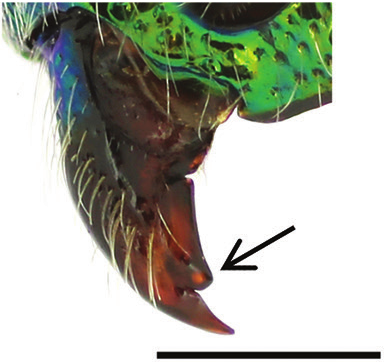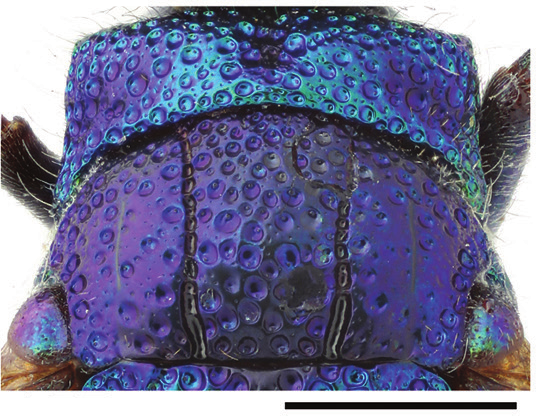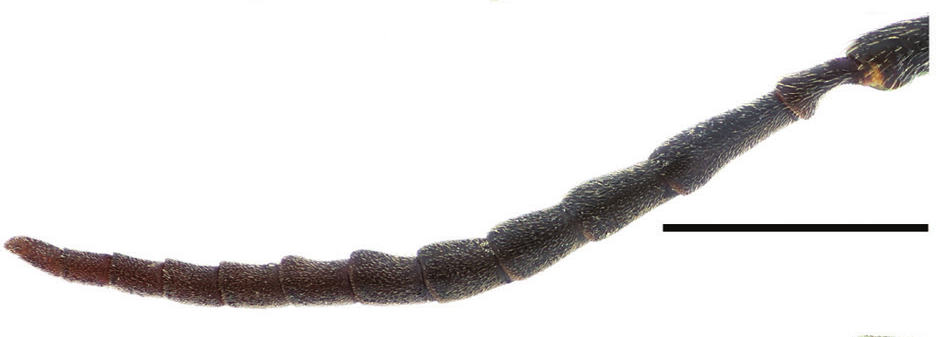Chrysis brevitarsis
- Innhold
- Diagnosis
- Distribution
- Biology
Diagnosis
Figure 155
Mandible (arrow indicating subapical tooth): C. brevitarsis ♀. Scale 1 mm.
Figure 157
Pronotum and mesoscutum, dorsal view: C. brevitarsis ♀. Scale 1 mm.
Figure 172
Antenna (arrow indicating F1 or F1 and F2): C. brevitarsis ♀. Scale 1 mm.
Length 7–10 mm.
The species is characterised by its subapically toothed mandible (Fig. 155), which is unique among the Nordic and Baltic species of the C. ignita group. The head and mesosoma are mainly dark blue with greenish reflections, and the metasoma is dorsally golden red or dark red. As in C. pseudobrevitarsis, the spurs of the mesotibia are approximately equal in length (Fig. 167) and the mandible is very thick (medial width more than half of its basal width in the female and more than two thirds of the basal width in the male). In the female, the metatarsus is not longer than the metatibia (Fig. 169) and the antenna is strongly nodular (Fig. 172). The punctation of T2 and the mesoscutum (Fig. 157) is sparser compared to C. pseudobrevitarsis.
Distribution
Estonia, Finland, Lithuania, Sweden. Rare.
West Palearctic: northern and central Europe (Linsenmaier 1997).
Be aware that the records present in the GBIF map may be misleading for some countries due to unrevised data sets or missing information.
GBIF Taxon: Chrysis brevitarsis Thomson, 1870Biology
Habitat: forest margins, clearings and gardens with sun-exposed dead wood (usually Betula, Populus and/or Alnus).
Flight period: June to July.
Host: Discoelius dufourii Lepeletier and D. zonalis (Panzer) (Vespidae) (Blüthgen 1961, Kunz 1994, our own obs.), possibly also Ancistrocerus antilope (Panzer) (Vespidae) (Martynova and Fateryga 2015).


